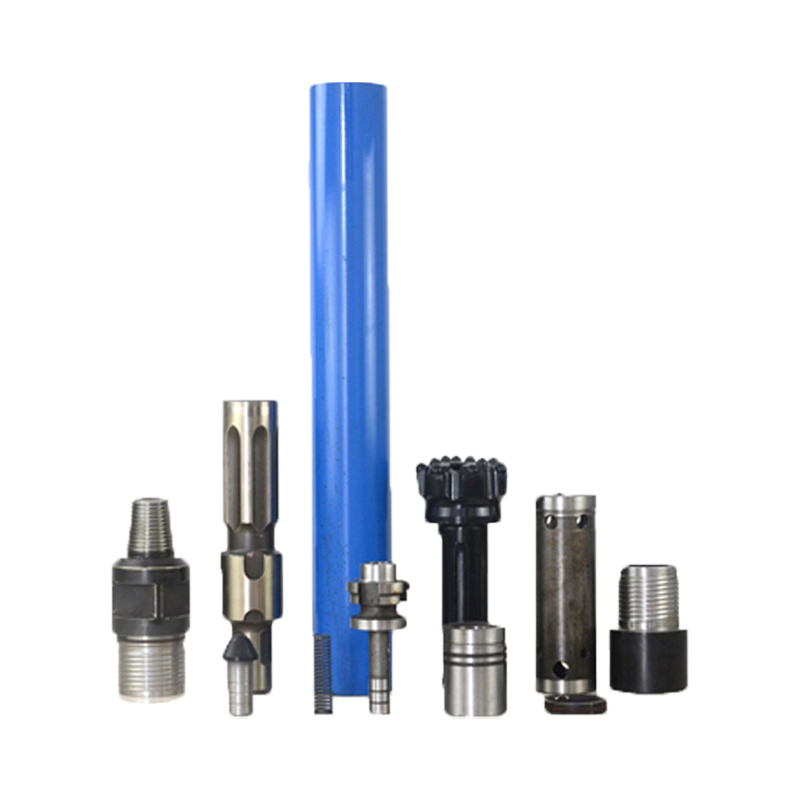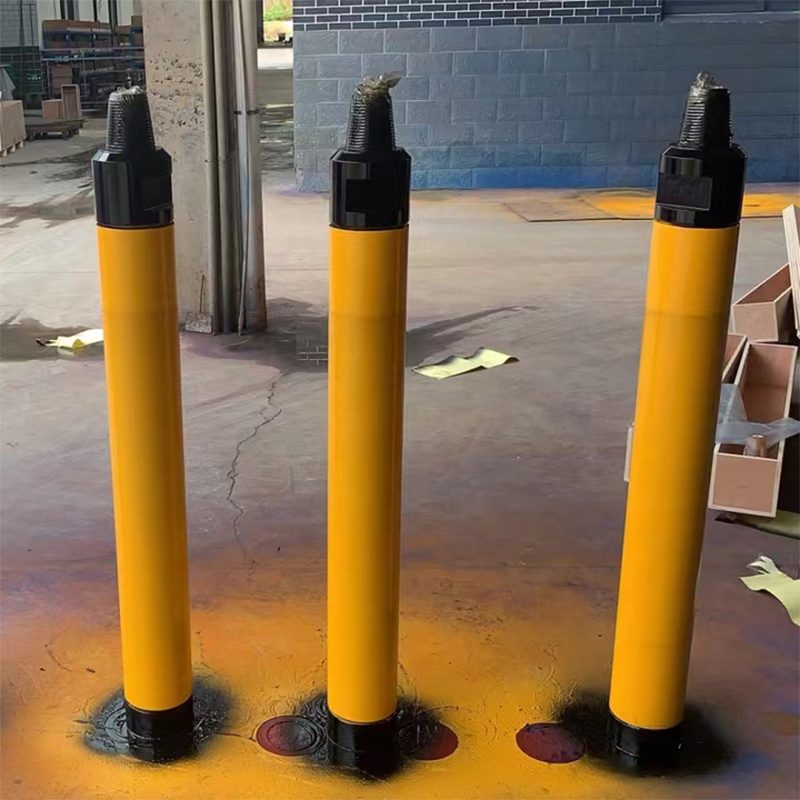Views: 0 Author: Site Editor Publish Time: 2025-06-17 Origin: Site









(1) Rotation Speed (n)
The rotational speed of the down-the-hole (DTH) hammer ensures the drill bit repositions between impacts. Empirical evidence indicates that optimal speed balances drilling efficiency and bit longevity. Too high or low speeds reduce performance. The recommended formula is:n = (f × d) / (π × D)
where:
n = rotational speed (r/min)
f = impact frequency (impacts/min)
d = diameter of bit button alloy (mm)
D = drilling diameter (mm)
Speed depends on rock properties, impact frequency, hole/button size, and requires field calibration. Typical operational range is 10–30 r/min1.
(2) Axial Pressure
Axial pressure overcomes rebound forces, ensuring bit-rock contact. It varies with DTH hammer type, rock hardness, and compressor pressure. Recommended pressure is 6–14.6 kg per mm of hole diameter. For example:
152 mm hole: 912 kg at <1.7 MPa
Adjustments are needed for hard rock or deep holes, where effective pressure = theoretical pressure − (drill pipe + hammer + bit weight). Excessive pressure reduces efficiency and accelerates bit wear1. Key factors:
Hammer type and hole size
Rock hardness
Compressor pressure/volume
(3) Torque
Torque enables bit rotation and increases with hole depth/rock hardness. Base requirement is 1.06 N·m per mm of diameter, but practical torque is ~2.7 N·m per mm due to borehole conditions3. Critical factors:
Hole diameter/depth
Rock formation

Conclusion
Optimal drilling efficiency and cost reduction require balanced adjustment of speed, axial pressure, and torque based on real-time rock conditions and equipment specifications.
Putian Qideli Engineering Equipment Co.,Ltd. is responsible for Qideli's self-ownedexport business. We start international business in 2017.
No.19, Houdong, Dongpuyu, Xindu, Licheng District, Putian, Fujian, China
